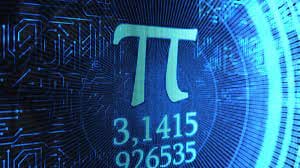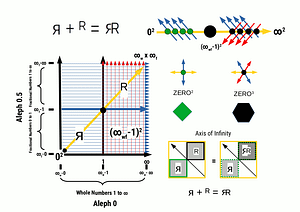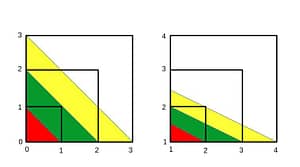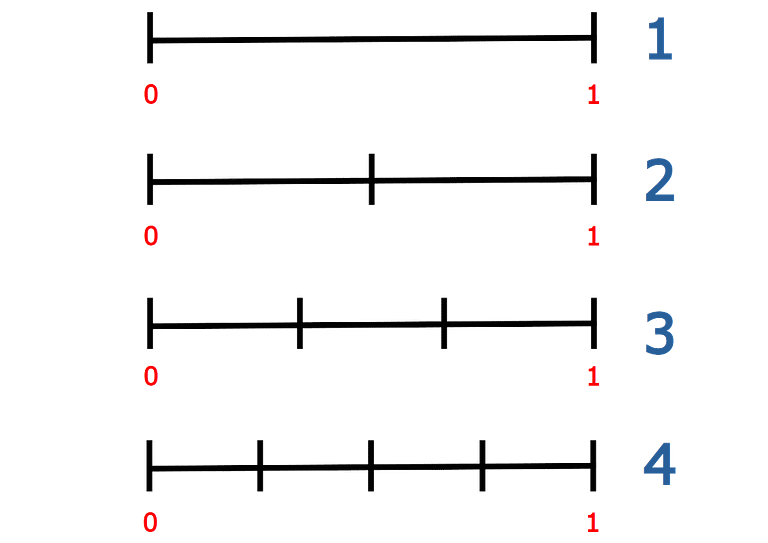
All prime numbers have a reciprocal between zero and one. As the number gets larger, so its reciprocal get smaller, diminishing towards zero. This creates a curvature, as the prime number series progresses. We call this the ‘reciprocal prime number curve’.
Overview
Prime numbers lie at the heart of number theory. These are whole values that can only be divided by one and themselves. This means they can not be produced by the product of any other numbers. This fact is one of the main reason why primes hold such mathematical importance.
As we have shown in our post on reciprocal space and the 8 infinities on the number line, reciprocal space is the mirror image of whole number space. This means that prime numbers can be determined by the division of a line between one and zero, which represents the reciprocal value of a whole number. If the divisions of the line DO NOT fall in the same place as any other preceding numerical divisions, then it will be a reciprocal prime number. This produces a curvature as each new prime is added to the series. As the number 2 is the only even prime, it divides the line into 2. 3 is the next prime, which produces a midsection of a third. After this, all other midsections produce by other primes will be smaller than the one produced by the number 3. Thus, all subsequent primes are contained within a 6th of the original number line, stemming from zero to one.
KEy Points
-
All prime numbers can be defined through reciprocal space, the division of a line between zero and one.
-
A prime number s one whole divisions are unique to any of those proceeding it
-
After the number 2, all primes will be odd, and produce a mid section of a specific size. This forms the prime number curvature.
THE
Concept
Infinity between One and Zero
The space between one and zero contains the complete set of all whole (or real) numbers. Therefore, it also contains the complete set of prime numbers. When reciprocal space is divided into two, the point is division is 0.5. This has a reciprocal value of two. As we can divide a line into an infinite number of smaller sized sections, any whole number can be derived in this way.
The first four numbers defined by the division of a line. the process can continue on into infinity
Reciprocal Primes
As we can define any number through the division of a line, we can apply the principle to prime numbers. In this way, we see a certain pattern emerging.
From this simple diagram we can see that numbers which are NOT primes will have a preceding value that divides the line in exactly the same place. The number 4 is not a prime due to the previous division of a line into 2. The number 6 has matching divisions for both 3 and and 2. This way of viewing numbers can not only tells us which number is prime, but it can also reveal why a number is not a prime.
Key point
A Reciprocal Prime is one that where all divisions of the line are unique to any one proceeding it.
Prime number curvature
If we remove all other numbers that are not prime, we get a series of divisions that are unique for each new line. The number 2 is the only even prime number that exists, which divides reciprocal prime number space in half. This means that all other numbers will have a set of divisions that are offset from the centre by a certain amount.
The fact that all primes after 2 are odd numbers means that each will have a midsection. This starts from the number 3 that exhibit a third in its midsection. After this number 5 produces a fifth part in its midsection and so on into infinity.
By referencing the midsection from the previous number, we can connect the points together to create the ‘prime number curvature’. Notice that the number 2 divides the number space into two equal parts. Looking at just one half, we can see that in order to produce the next prime number in the series we need to predict which number will be the next to produce the next division that is closer to the centre line, whilst at the same time maintains a completely unique set of divisions.
As the number 2 divides the line in half, and the number 3 forms the largest boundary for all subsequent midsections, we can see that all prime numbers after 3 can be identified by just a 6th of the original line.
THE
Conclusion
what did we learn about Primes?
All primes exhibit a reciprocal between zero and one. These can be mapped to produce a prime number curvature.
The definition of a prime number
This offers us a new way to categorisa prime number as that whose recoprocal generates a unique set of divisions to any number proceeding it.
Carry On Learning
This article is part of our new theory, ‘Maths of Infinity‘
Read the main article or browse more interesting post from the list below


The algebraic solution to π and the number ℮
The numbers π and the number ℮ are considered to be transcendental in nature, as there is no algebraic root that can define these constants. Yet, by constructing a set of equations, we can understand something interesting about their relationship.

Solving the Russell Paradox: 2D geometric solution to the continuum hypothesis
The Russell Paradox arises from the fact that all numbers greater than 1 exhibit a reciprocal value. This is resolved by the folding of number space.

Aleph 05
Adding sequential fractions creates a series that expands by 0.5, forming an infinite set between the whole and real numbers, solving the Continuum Hypothesis.





